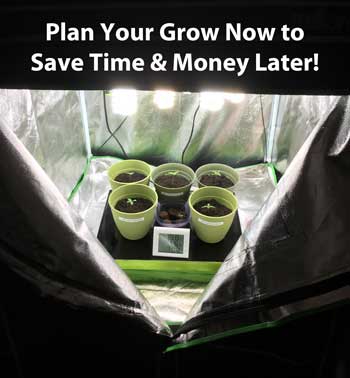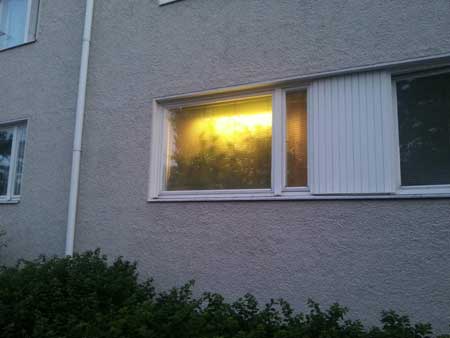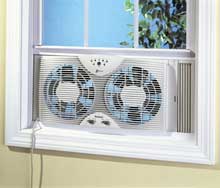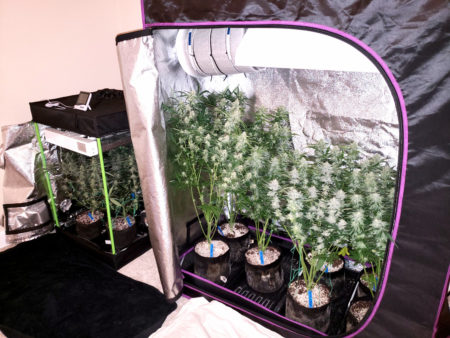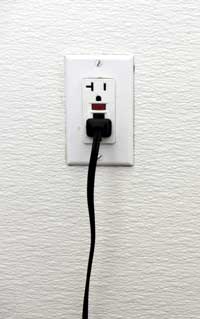by Nebula Haze
Location, location, location. Just like in real estate, when growing cannabis the location is key. If you put your marijuana garden in the wrong place it may add unnecessary work and introduce potential stealth concerns. Choose the right place to grow and you’ll be rewarded with happy plants and awesome yields with the least work from you.
Let’s look at your options. What places do you have available in your home to grow? This tutorial will help you figure out the best place to grow your cannabis plants indoors. Taking a little time to plan your grow now can make things a lot easier for you down the road!
Here are some the most common places growers put their plants:
- Closet
- Bedroom (in a grow tent)
- Spare Room
- Spare Bathroom (easy access to water and a drain)
- Garage
- Cellar or Basement
- Attic
Now that you’re thinking about the possibilities, let’s look into important factors to help you narrow it down.
1.) Security & Concealment
Even if growing cannabis is legal where you live, security and concealment are still something to consider. If you can help it, you don’t want to attract potential thieves, gain the attention of overzealous law enforcement, or annoy your neighbors. Keeping your grow private is a good idea even though you’re not doing anything wrong.
Consider:
- Is this location easy to hide?
- Will guests be able to wander in or notice something fishy?
- If light spills out, will it look suspicious?
Total security failure!
2.) Heat & Ventilation
Most grow lights get at least a little hot. Therefore, unless you have a relatively small light or your grow space is naturally cold, you likely will want to find a way to vent out heat.
Consider:
- Is there a window to vent heat?
- Is there another place I could vent hot humid air safely?
- If I vent directly in the room, would it matter if the temperature went up several degrees while lights are on?
A private window is often the best place to vent heat, but sometimes that’s not an option. I live in a condo with very public windows, so right now I actually vent the heat from my grow lights directly into the room. This raises the temperature by several degrees when the room is closed up, though has much less of an effect on the temperature when the window or door is open. It’s possible to vent heat directly out a window without anyone outside being able to tell, but it takes a bit of DIY (Do It Yourself) creativity.
A window fan pointing out can make a big difference if your grow lights raise the temperature of a room by a few degrees
3.) Space
Think about the places in the house with enough space for plants. Extra space is always nice! I recommend first-time growers start with a 2’x4’x6′ grow tent if possible. That gives you easy access to all your plants and plenty of height. Think about the places in the house that would accommodate that size tent. I have a tent that size in my bedroom, and it sort of looks like a clothes wardrobe at first glance.
This is a 2’x2’x3′ grow tent on left and 2’x4’x5′ grow tent on right
- Micro Grows, Stealth Boxes, and Mini Tents (smaller than 2’x4′ or 3’x3′) – yields up to several ounces
- Small Tents and Cabinets (around 2’x4′ or 3’x3′) – yields up to about a pound
- Large Tent – (larger than 3’x3’, but no larger than a 5’x5’) – yields up to about a max of 3 lbs
- Rooms or Extra Large Tents – (larger than 5′ x 5′) – can yield many pounds at a time
As far as height…
- 3-4 feet of height – suitable for a mini grow (and that’s pushing it); can yield up to several ounces in a 2’x2′ space
- 4-5 feet of height – for a small grow, could yield several ounces, possibly up to about a pound with expert care in a 2’x4′ or 3’x3′ space
- 5-7+ feet of height (recommended for beginners) – having 5 or even better 6+ feet of height will make things much easier on you. This is because you usually won’t have to worry as much about your plants getting too tall. You don’t necessarily need all this height, but it’s nice!
If you’re not sure, I highly recommend a 2’x4’x6′ grow tent for beginners. It’s small enough that you have easy access to all your plants but big enough that you don’t need to worry about height and can harvest up to a pound of buds (or even more) if you use it correctly.
Or get more information about….
- Mini Tents
- Mid-Size Tents <–Recommended for first-time growers
- Large Tents
In addition to the space needed by your plants, you also want to make sure you have enough room to easily get to your plants so you can tend them.
4.) Noise & Smell
Will anyone be able to smell your plants or hear noise coming out of your grow space?
Luckily, if you get a grow tent with a carbon filter, you won’t be able to smell the plants outside the tent. Even if you put your nose up to the tent, you won’t smell anything. However, whenever you open the tent the smell will spill out, so it’s a good idea to consider whether smells might be an issue. Even if growing cannabis is legal where you live, it’s always smart (and nice) to be a good neighbor and hide all odors because some people don’t like the smell.
The main source of noise in your garden is going to be fans, and some grow lights make a humming sound. If you’re growing in hydroponics, there may be pumps going. The best way to reduce noise is to get great equipment and set everything up properly. With the proper setup, an indoor cannabis garden can be basically silent and odorless.
5.) Moving Supplies In and Out
No matter how well you conceal your grow space, you still will need to occasionally bring supplies in and out. You’ll also have to dispose of plants after they’re harvested. If growing in a room in your house, this likely won’t affect you. But if you were growing in a detached garage, for example, you’d have to consider how to move supplies in and out without alerting neighbors. You don’t necessarily want people to see you hauling a bunch of soil into the house!
6.) Electricity
An indoor grow needs access to electricity for the fans and light. So if you want to grow in your attic but there are no outlets up there, you have to figure out a way to get electricity. Additionally, you want to make sure the electrical circuit is able to support your grow light and fans without short-circuiting. If you’re growing with one or two mid-size grow lights, you probably don’t have a whole lot to worry about unless you have a whole lot of things plugged into the same circuit. But if you’re going to be growing with a lot of big lights in the same room, you might consider running a new source of power to the fuse box just for your grow room.
7.) Damages
No one wants to cause damage to their home. If you’re trying to DIY your grow space from scratch, it can be easy to scuff walls or spill water on the floor. If you’re not careful about keeping everything contained, the heat/light/humidity from the grow space can start to cause damage on finished surfaces. A grow tent will help greatly to reduce potential damage because it’s waterproof and keeps everything contained and away from all your nice stuff. But this is something to consider if you’re stuck between growing in your newly decorated bedroom or your utilitarian garage.
Where in the home do you plan to grow?

